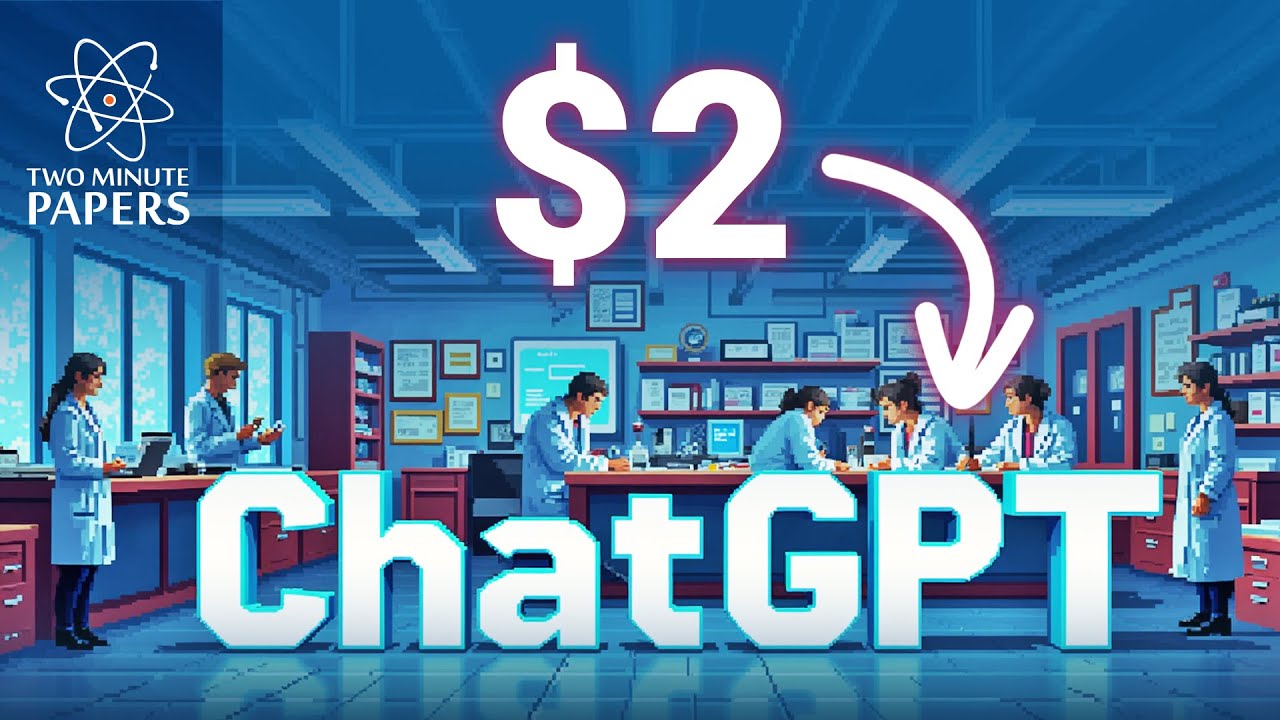The video explores the innovative concept of using multiple ChatGPT instances to simulate a research lab, where AI agents collaborate on complex research questions, demonstrating remarkable efficiency and effectiveness at a low cost. It emphasizes the necessity of human input in guiding AI-generated ideas to ensure practical and impactful outcomes, highlighting the potential for AI to enhance academic work while still relying on human creativity for true innovation.
In a fascinating exploration of AI’s potential, the video discusses the concept of creating a research lab using multiple instances of ChatGPT. The idea is to simulate a research environment where various AI agents take on roles such as professors, PhD students, and software engineers. This approach builds on previous experiments where ChatGPT agents were placed in a simulated town, showcasing their ability to interact, form relationships, and even engage in political discussions. The video sets the stage for a groundbreaking experiment where these AI agents collaborate to tackle complex research questions.
The process begins with a human inputting a research idea, such as examining biases in language models. From there, a ChatGPT agent acting as a PhD student conducts a literature review to determine if the question has already been addressed. Subsequently, a more experienced postdoc AI develops a research plan, while additional AI agents are tasked with coding the project. This collaborative effort among multiple AI agents is designed to ensure high-quality research output, demonstrating the potential of AI to enhance academic work.
The results of this experiment are described as “absolute magic,” with the AI-generated research outperforming existing techniques across various tasks. The video highlights the surprising effectiveness of this approach, likening it to slicing a large brain into smaller, more efficient components that collectively yield better results. The cost of conducting this research is remarkably low, with the entire process taking only 20 minutes and costing approximately $2.33, showcasing the efficiency of AI in research.
The video emphasizes the importance of human input in the research process, noting that while AI can generate novel ideas, these ideas often lack feasibility. The presenter argues that true innovation requires the combination of AI’s creative capabilities with human ingenuity. The example of AlphaFold, a project that achieved significant breakthroughs in protein folding, illustrates the necessity of human involvement in guiding AI to produce practical and impactful results.
In conclusion, the video presents a hopeful vision for the future of AI in research, suggesting that AI can empower human thought by handling time-consuming tasks. However, it also stresses that the initial idea must come from humans, as AI alone cannot invent fundamentally new concepts without human insight. The discussion invites viewers to consider the implications of this technology and encourages them to share their thoughts in the comments, fostering a dialogue about the evolving relationship between AI and human creativity in research.
